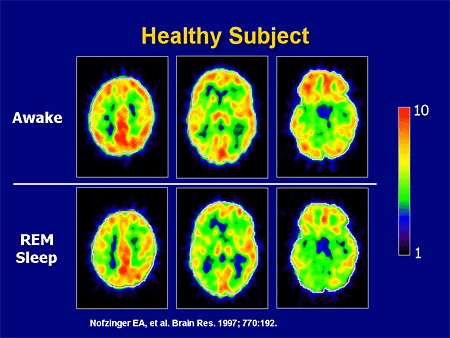
How do we dream?
The scientific part of dreaming, such as the brain and the sleep cycle. Have you always wanted to know more about your brain when it's asleep? Then this section is for you!
The Sleep Cycle
The sleep cycle is a cycle of 5 stages, which is experienced by everyone every night. It gets repeated a couple of times, and if you don't wake up, it means that you will have about 5 dreams per night. Here is how it works:
In the cycle, people experience:
1. almost-awake sleep (stage 1)
2. light sleep (stage 2)
3. deep sleep (stages 3-4)
Almost-awake sleep is when you've just fallen asleep when you can still hear noises and what is happening around you. As you doze off further, light sleep occurs, which is the type of sleep which you have during a 20-minute nap.
This cycle lasts for about 90 minutes and is repeated around 5 times per night. The cycle goes from stage one to stage four and goes back the way it started.
As someone is about to re-experience the entire cycle, the fifth stage occurs; Rapid Eye Movement-sleep, usually called REM-sleep.
During this stage, this happens:
The body gets paralyzed,
the eyes begin to move underneath the eyelids,
and the heart rate and breathing become inconsistent.
The brainwaves go to a point where it looks like the sleeping person is awake.
The REM-stage of sleeping makes up about 25% of our sleep cycle as adults, but as younger children and babies, it makes up about 80% of our sleep cycle and increases in length after every time we go through this 5th stage.
After REM-sleep, someone keeps on sleeping and experiences the whole cycle, including REM-sleep, again for a few times. However, there are plenty of almost-awake moments around that time, which can be seen in figure 1, and which can lead to someone waking up. However, if the person is to wake up, they experience the whole cycle over again when they fall asleep.
Lucid Dreaming
Lucid dreaming is one of the more wonderous sides of dreaming. It basically allows us to take control of our dreams and do whatever we want. It isn't very common, sadly, but once in a while a lucid dream pops up, and it's heaven. You can fly, go anywhere you want, really, and meet any person.
The video on the right from ASAP Science will teach you more about lucid dreaming and how to lucidly dream more often.

Figure 1 | http://stage.upliftconnect.com/sleep-cycle/

Figure 2 | Source noted on the bottom of the picture
Brain Areas
Under the topic sleep cycles, you already read that the brain functions like it's awake when it's in REM-sleep. Something remarkable is that not all of brain areas function like when we are awake, even though brain waves certainly make it look like it.
For example, the area of the brain that looks at your own image of yourself is turned off, as well as the function of judging. This explains that when in dreams something strange happens, we are not fazed by it. We don't think it's strange until we wake up and use that function again.
And, when we do something that we would choose not to do in dreams, only when we wake up and remember, we feel embarrassed.
Below on 'figure 2', you can see how similar the brain is when you are experiencing REM-sleep versus when you are awake. A blue color means your brain doesn't function at all, while a red color means your brain uses that part to the fullest.
The fact that those areas are turned off makes us more creative in dreams. This makes it easier for us to link two things that aren't normally linked, like the creator of Google. He dreamed of Google before he thought of it in real life because his imagination was stimulated more than normal. Anyone of us could be the next person dreaming up a new invention!
Because the different way of thinking in dreams makes us more creative in real life, does that mean we need dreams to get good new ideas to help us with homework, studying or anything else?
You can find out more about this by clicking this link
It is common knowledge that our brain does not stop working when we are asleep. However, the fact that we go through stages of sleep and use our brain differently in each one of them, might not be widely known. I will start explaining the sleep cycle to you, and the ways our brain behaves when we are asleep.